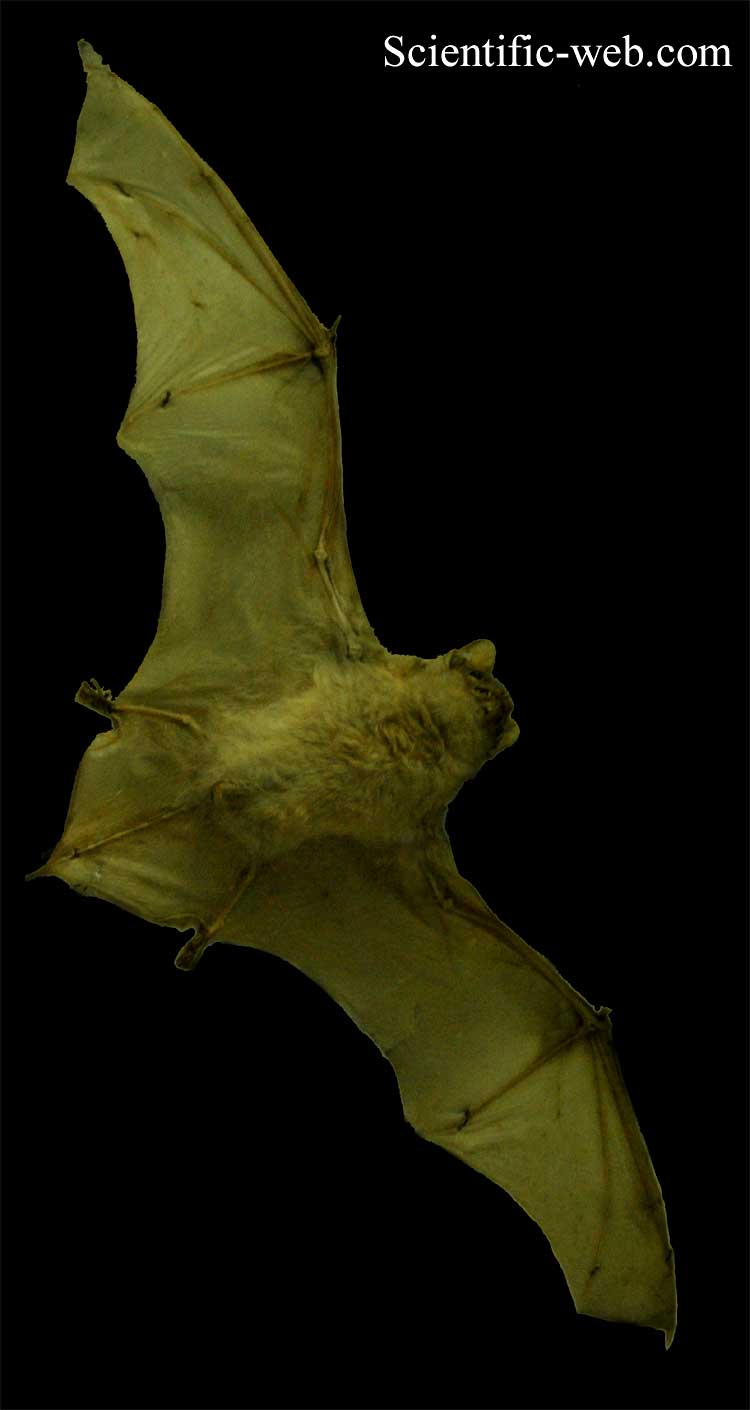Nyctalus noctula , Photo: Michael Lahanas Cladus: Eukaryota Name Nyctalus noctula Schreber, 1774 Type locality: France. Synonyms * Nyctalus macuanus Peters, 1852 References * Schreber, 1774. Die Saugethiere, 1: 166. Distribution * Europe & Southern Scandinavia to Urals and Caucasus Vernacular names -------- The Common Noctule (Nyctalus noctula) is a species of bat common throughout Europe, Asia, and North Africa. The UK distribution can be found on the National Biodiversity Network website here. With a length of 8cm and a wingspan of 35cm, the common noctule bat is one of the largest in western and central Europe. When hunting, it often starts flying in early dusk, earlier than most European bats. It flies high and fast above the forested areas that are its preferred habitat. Small to medium sized woodlands are preferred but they may forage up to 20km from the woodland at night. When roosting through the day, the noctule bat usually seeks out tree holes or even bat boxes attached to the tree trunks. Generally noctule bats live in forests, but some populations can be found in towns. There are many noctules in Hamburg, Vienna, Brno and other some other central European cities. In addition to the typical ultrasounds the noctule bat may expel shrill cries - this is a mating call5. Common noctule bats mainly eat beetles, moths and winged ants. In addition to insects, the giant noctule eats migrating birds.[2] Noctule bats hibernate in winter. Tree holes are not warm enough so they search caves or objects like church steeples. Sometimes summer territories and hibernating places are hundreds of kilometres apart. The common noctule bat is declining but the other European noctules are even rarer. The lesser noctule and the giant noctule live in forests only and never in towns. Echolocation The noctule uses two main calls for echolocation. The frequencies of the first are 26-47kHz, have most energy at 27kHz and an average duration of 11.5ms.[3] The frequency of the second call is 22-33kHz, having most energy at 22kHz and an average duration of 13.8ms.[3][4] References 1. ^ Chiroptera Specialist Group (1996). Nyctalus noctula. 2006. IUCN Red List of Threatened Species. IUCN 2006. www.iucnredlist.org. Retrieved on 2007-04-17. 5. Woodland Management For Bats Guide Source: Wikispecies, Wikipedia: All text is available under the terms of the GNU Free Documentation License |
|


